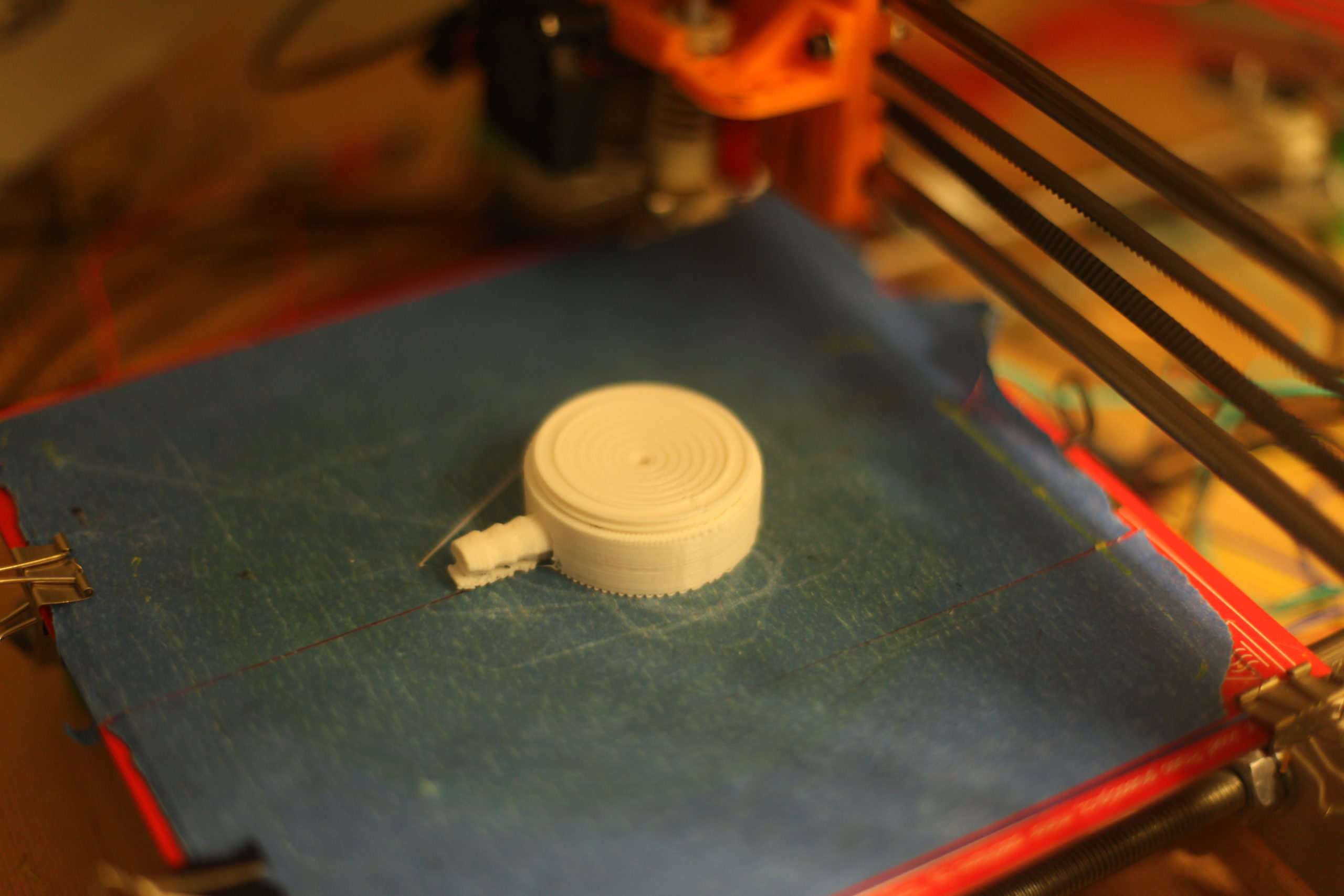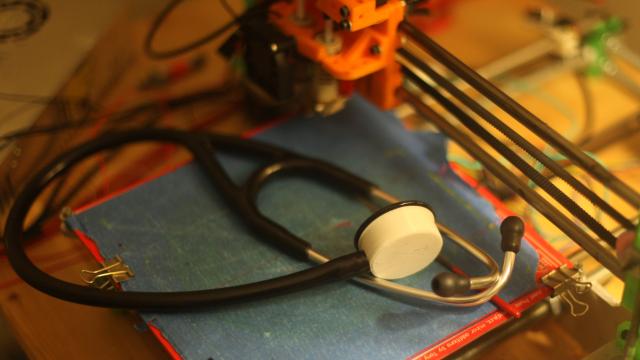The stethoscope is a staple of modern medicine; but in parts of the developing world, off-the-shelf models are prohibitively expensive. That’s why a team of doctors and hackers in Gaza has started 3D printing their own.
All told, their stethoscope — which reportedly offers better sound quality than industry models — costs less than $US5 to build.
Following the Israeli invasion of Gaza three years ago, emergency room doctor Tarek Loubani frequently found himself holding his ear to the chest of victims, for lack of a $US200 dollar stethoscope. But a lightbulb went on when he discovered his nephew’s toy stethoscope had surprisingly good sound quality. In 2012, Loubani gathered a group of doctors together to see if they could design their own version of the out-of-patent medical device at a fraction of the cost.

The acoustic response of the Glia stethoscopes was assessed by channeling sound through a water-filled balloon
Loubani’s group, which calls itself the Glia project, has spent the last three years prototyping and field testing a home-brewed stethoscope, and they’re finally nearing a finished product. The stethoscope’s 3D-printed head costs a mere 30 cents, and at least based on Loubani’s own acoustic tests (depicted above), it offers better sound quality than the industry leading Littmann Cardiology 3.
Attaching a tube and an earpiece brings the total cost of the device to around $US5. The only thing left to build, Motherboard reports, is the y-piece which splits sound coming from the main tube (the one connected to the stethoscope head) into the two signals that go to each of the physician’s ears.

The 3D printed stethoscope head
The device hasn’t yet been reviewed by the broader medical community, but Loubani is confident it will pass audio tests with flying colours. And he’s already trying to decide what costly medical device to tackle next. According to Motherboard, the Glia project is currently working on an open-source pulse oximeter (a device that monitors blood oxygen levels), and an electrocardiogram. The team is keeping all of its code on GitHub so that doctors on a shoestring around the world can learn and contribute.
Developed in the early 19th century, the stethoscope is one of the oldest medical devices still widely used by physicians today. The core functionality of stethoscopes hasn’t really changed since the mid 20th century, but we’ve continued to add digital bells and whistles over the years, and that’s driven the price up.
It’s worth remembering that simplicity and practicality matter when you’re trying to save lives.
Images via Glia
